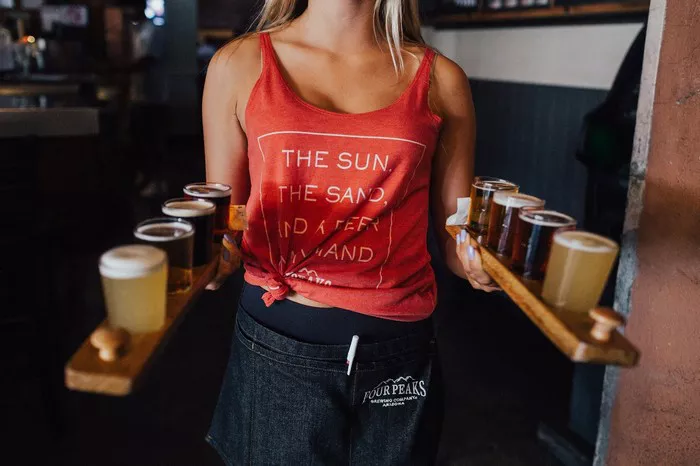In the intricate tapestry of the beer industry, a multitude of brews have left their mark, each with its own unique taste, story, and cultural significance. However, the landscape of beer is ever-evolving, and many beloved brews have disappeared from production, leaving behind a legacy that beer enthusiasts continue to cherish. This article aims to delve into the world of vanished beers, exploring the reasons behind their discontinuation, the impact on the brewing industry, and the nostalgia that surrounds these lost libations.
Historical Brews Lost in Time
Throughout history, the brewing landscape has witnessed the rise and fall of numerous beers, each with its own flavor profile and historical context. Beers such as Ballantine XXX Ale, once a prominent fixture in American brewing, and Rheingold Beer, a New York City favorite, have ceased production, leaving a void in the hearts of those who once savored their distinctive tastes.
What beers are not made anymore often carry a piece of regional history within their recipes. The closure of breweries that produced iconic regional brews, like the Pittsburgh-brewed Iron City Beer or the San Francisco-based Buffalo Brew, led to the disappearance of these beers from the market. Such beers were not merely beverages but cultural symbols deeply intertwined with the communities they served.
Changing Tastes and Industry Trends
The evolution of consumer preferences plays a pivotal role in the discontinuation of beers. What beers are not made anymore can often be traced back to shifts in taste preferences and emerging trends within the beer industry. Beers that were once considered classics might lose their appeal as consumers develop a palate for newer styles or flavors, prompting breweries to adapt or discontinue production altogether.
Moreover, advancements in brewing technology and techniques contribute to the discontinuation of certain beers. Breweries might choose to focus on producing more profitable or popular brews, leading to the phasing out of traditional or less commercially successful beers. This phenomenon has led to the demise of several niche or craft brews that failed to gain mass-market traction despite their quality and uniqueness.
Economic Pressures and Brewing Constraints
Economic factors and brewing constraints also play a pivotal role in the disappearance of beers from the market. Fluctuating costs of raw materials, changes in taxation, or even brewery mergers and acquisitions can significantly impact the feasibility of producing certain beers. Small-scale breweries might find it challenging to sustain production if faced with rising costs or limited access to essential ingredients, ultimately resulting in the discontinuation of their offerings.
What beers are not made anymore also reflect the challenges posed by brewing constraints. Beers requiring specialized ingredients that are difficult to source or those with complex and time-consuming brewing processes often become financially unviable for breweries, leading to their discontinuation despite their uniqueness and popularity among niche audiences.
The Impact on Beer Culture and Collectors
The disappearance of certain beers from production has not only impacted beer culture but has also given rise to a community of beer enthusiasts and collectors passionate about preserving the legacy of these lost brews. For aficionados, hunting down vintage bottles or cans of discontinued beers has become a cherished endeavor, with some establishing impressive collections that serve as a testament to the rich history of brewing.
The rarity of discontinued beers has also led to a thriving secondary market where collectors trade or sell sought-after brews at premium prices. This phenomenon underscores the sentimental value attached to these beers and the lengths enthusiasts are willing to go to experience a taste of the past.
Revival and Reimagining of Lost Brews
In some cases, the story of what beers are not made anymore takes an unexpected turn with breweries deciding to revive or reimagine these lost brews. Inspired by nostalgia or driven by consumer demand, breweries have occasionally resurrected discontinued beers, either staying true to the original recipe or offering a modern interpretation of the classic brew.
Reviving lost beers allows breweries to tap into the emotional connection and nostalgia associated with these drinks while introducing them to a new generation of consumers. By leveraging advancements in brewing techniques and marketing strategies, breweries can breathe new life into forgotten brews, rekindling interest and excitement among beer enthusiasts.
Conclusion
The world of beer is a dynamic and ever-changing one, with the discontinuation of certain brews being a natural part of its evolution. What beers are not made anymore represent not only forgotten flavors but also a tapestry of history, culture, and shifting consumer preferences. Despite their disappearance from production, these beers continue to hold a special place in the hearts of enthusiasts, serving as a reminder of the rich and diverse heritage of brewing. As the beer industry continues to innovate and evolve, the legacy of these lost brews remains an integral part of its narrative, cherished by those who celebrate the artistry and craftsmanship behind each sip.


